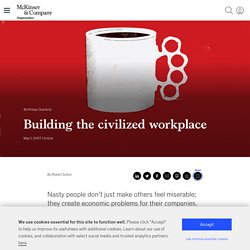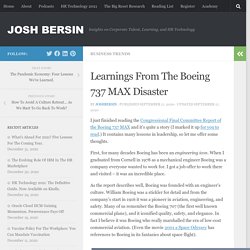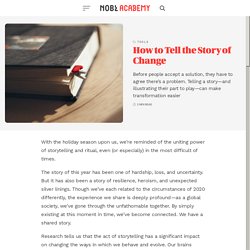

OODA and Agility; Reaching a Conclusion Faster - XONITEK. Building the civilized workplace. Lars Dalgaard is CEO and cofounder of SuccessFactors, one of the world’s fastest-growing software companies—and the fastest with revenues over $30 million.

Dalgaard recently listed some milestones that his California-based company passed in its first seven years: the use of its software by more than two million employees at over 1,200 companies around the world the use of its software by employees speaking 18 languages in 156 countries growth three times that of the company’s nearest competitor enthusiastic recommendations of the product by nearly all customers dramatically low employee turnover employing no jerks That’s right—no jerks—although the word SuccessFactors really uses (except on its Web site) is a mild obscenity that starts with the letter A and sort of rhymes with “castle.”
All the employees SuccessFactors hires agree in writing to 14 “rules of engagement.” The boss factor. Today’s leaders have never been under so much pressure.

Even as they navigate the evolving COVID-19 crisis—keeping their customers and employees safe and their businesses viable—expectations are sky-high. Why Your Team Should Practice Collective Mindfulness. Mindfulness has been shown to be beneficial in the workplace on a number of fronts, increasing personal well-being as well as tactical skills like decision-making and focus.

But if a team’s culture is toxic, the benefits of mindfulness for the individual... Evidence suggests that mindfulness can help to reduce stress and anxiety, increase resilience, divergent thinking, job satisfaction and improve focus and leadership flexibility. Are you building employee capabilities across these four critical areas? January 25, 2021We’ve long known that the key to driving sustainable long-term performance is to place an equal emphasis on how the organization makes money (performance) and how leaders run the place (health).

Companies that do so outperform their peers threefold. More recently, we’ve found that leaders can capture even more value when they go one step further and focus on performance and health at both the organization and individual levels. Driving performance and health across levels is a tall order, even for the most experienced leader. Doing this well requires embedding this new way of operating across all layers of the organization. This can be done by revamping capability-building programs to focus on helping employees develop knowledge, skills, and behaviors in four key areas (see exhibit). We strive to provide individuals with disabilities equal access to our website. Learnings From The Boeing 737 MAX Disaster. I just finished reading the Congressional Final Committee Report of the Boeing 737 MAX and it’s quite a story (I marked it up for you to read.)

It contains many lessons in leadership, so let me offer some thoughts. First, for many decades Boeing has been an engineering icon. How to Tell the Story of Change - NOBL Academy. With the holiday season upon us, we’re reminded of the uniting power of storytelling and ritual, even (or especially) in the most difficult of times.

The story of this year has been one of hardship, loss, and uncertainty. But it has also been a story of resilience, heroism, and unexpected silver linings. Though we’ve each related to the circumstances of 2020 differently, the experience we share is deeply profound—as a global society, we’ve gone through the unfathomable together. By simply existing at this moment in time, we’ve become connected. We have a shared story. How Stories Change the Brain. Ben’s dying.

That’s what Ben’s father says to the camera as we see Ben play in the background. Ben is two years old and doesn’t know that a brain tumor will take his life in a matter of months. Ben’s father tells us how difficult it is to be joyful around Ben because the father knows what is coming. But in the end he resolves to find the strength to be genuinely happy for Ben’s sake, right up to Ben’s last breath. Everyone can relate to this story. TsvB 2020 JUB 03 Onmacht als systeemvraagstuk. How Apple Is Organized for Innovation. Apple is well known for its innovations in hardware, software, and services.

Thanks to them, it grew from some 8,000 employees and $7 billion in revenue in 1997, the year Steve Jobs returned, to 137,000 employees and $260 billion in revenue in 2019. Much less well known are the organizational design and the associated leadership model that have played a crucial role in the company’s innovation success. When Jobs arrived back at Apple, it had a conventional structure for a company of its size and scope. It was divided into business units, each with its own P&L responsibilities.
General managers ran the Macintosh products group, the information appliances division, and the server products division, among others. 4 Organizational Design Issues That Most Leaders Misdiagnose. During our first conversation, Henry, the CEO of a technology company, expressed frustration over his organization’s inability to stay focused on and execute priorities.

“We agree upon priorities at the beginning of each quarter,” he said, “but when it comes time to review them, I’m told that urgent crises have prevented us from making progress. We never get anything done.” When I asked Henry what solutions he’d tried to refocus his team, he rattled off a litany of activities: weekly check-ins, protocols limiting excessive email, and online dashboards that display progress — or the lack thereof — against key initiatives. These solutions revealed that Henry defined their problem as one of accountability (frequent progress meetings and public dashboards) and capacity (attempts to curtail email traffic). Deze 7 soft skills zijn onontbeerlijk bij een businesstransformatie. My team needs my leadership and I don’t know how to help them through this storm. Business problem solving.
Great problem solvers are made, not born.

How centered leaders achieve extraordinary results. For the past six years, we have been on a journey to learn from leaders who are able to find the best in themselves and in turn inspire, engage, and mobilize others, even in the most demanding circumstances. And the business environment has become more demanding: the global financial crisis and subsequent economic downturn have ratcheted up the pressure on leaders already grappling with a world in transformation. More than half of the CEOs we and our colleagues have spoken with in the past year have said that their organization must fundamentally rethink its business model. Our work can help. We have conducted interviews with more than 140 leaders; analysis of a wide range of academic research in fields as diverse as organizational development, evolutionary biology, neuroscience, positive psychology, and leadership; workshops with hundreds of clients to test our ideas; and global surveys.
Podcast We strive to provide individuals with disabilities equal access to our website. Meaning. Crisis leadership: An agenda for troubled times. Every Leader Needs to Navigate These 7 Tensions. In recent years, articles have claimed that old-style command-and-control leadership is “out” and a new way of leading is “in.” Instead of telling people what to do, leaders should ask them open-ended questions. Instead of sticking exactly to plans, they should adjust goals as new information emerges.
Instead of working from the gut, a leader should rely on data to make decisions. And so forth. Let’s call this old-fashioned leadership model traditional and the new one emerging. In surveys and interviews with hundreds of leaders worldwide, we uncovered seven core tensions between the traditional and emerging leadership approaches. Non cogito, ergo sum. It was the fifth set of a semi-final at last year’s US Open. After four hours of epic tennis, Roger Federer needed one more point to see off his young challenger, Novak Djokovic.
As Federer prepared to serve, the crowd roared in anticipation. A Leader’s Framework for Decision Making. Executive Summary. Managing a manufacturing plant through the coronavirus crisis. As the COVID-19 pandemic sweeps across the globe, manufacturing organizations face significant operational challenges. Some companies have temporarily shuttered factories in response to government restrictions or falling demand, but others are facing significant increases in demand for essential supplies. 4 Behaviors That Help Leaders Manage a Crisis. Executive Summary. The New Boadroom Imperative: From Agility To Resilience. The platform play: How to operate like a tech company. “The question is not how fast tech companies will become car companies, but how fast we will become a tech company.” This is how the board member of a global car company recently articulated the central issue facing most incumbents today: how to operate and innovate like a tech company.
The tech giants of today have been some of the most innovative companies in the past generation. Decision making during the coronavirus crisis. This article is part of a series Leadership in a crisis: Responding to the coronavirus outbreak and future challenges. It draws together McKinsey’s collective thinking and expertise on five behaviors to help leaders navigate the pandemic and recovery.
Separate articles describe organizing via a network of teams; displaying deliberate calm and bounded optimism; demonstrating empathy; and communicating effectively. Council Post: Change Leadership: Why Your Head, Heart And Gut Are Critical To Listen To. The changeable organization. How to beat the transformation odds. Resilience in transport and logistics.
Human-Centered, Systems-Minded Design. Leaders: Don't fall into the 'identity mindtrap' - pbailleur - Mail van livingsystemscoaching.be. A New Style of Leadership Is Emerging - The Startup - Medium. 6-Traits of Unshakable Leaders - Summit Plus - Medium. Are you a growth leader? The seven beliefs and behaviors that growth leaders share. How women’s leadership programs can boost a company’s organizational health. Tackling shortages in the UK workforce by rethinking skills and the future of work. What is systems leadership, and how can it change the world? Mindsets and practices of the best CEOs. Making time management the organization’s priority. New Logic of Competition. 24 Charts of Leadership Styles Around the World. Jim Collins - Concepts.
NOBL Academy - How Do We Decide? Systemic Leadership: Seven Tips To Navigate Change In Complex and Chaotic Times. Transformation starts with agile leadership. Research: To Be a Good Leader, Start By Being a Good Follower. The Role of a Manager Has to Change in 5 Key Ways. Transformation starts with agile leadership.
Can We Really Change? In Other Words, Can Coaching Really Work? Winning with your talent-management strategy. Your browser isn't supported. A CEO’s guide to reenergizing the senior team. From lean to lasting: Making operational improvements stick. The organization that renews itself: Lasting value from lean management. How Humble Leadership Really Works. Successfully transitioning to new leadership roles. Part 1: The Role of Discomfort in the Future of Work. Studies Show That People Who Have High “Integrative Complexity” Are More Likely To Be Successful.
Eight shifts that will take your strategy into high gear. How to beat the transformation odds. Why leadership-development programs fail. How biases, politics and egos trump good strategy. Intentional Leadership: 4 Tips for Growing Strong Leaders. Six Tools for Communicating Complex Ideas. How To Be An Adult— Kegan’s Theory of Adult Development. Google Spent Years Studying Effective Bosses. Now They Teach New Managers These 6 Things. Change Management Plan Template (Example, steps, PPT,....) What’s missing in leadership development?